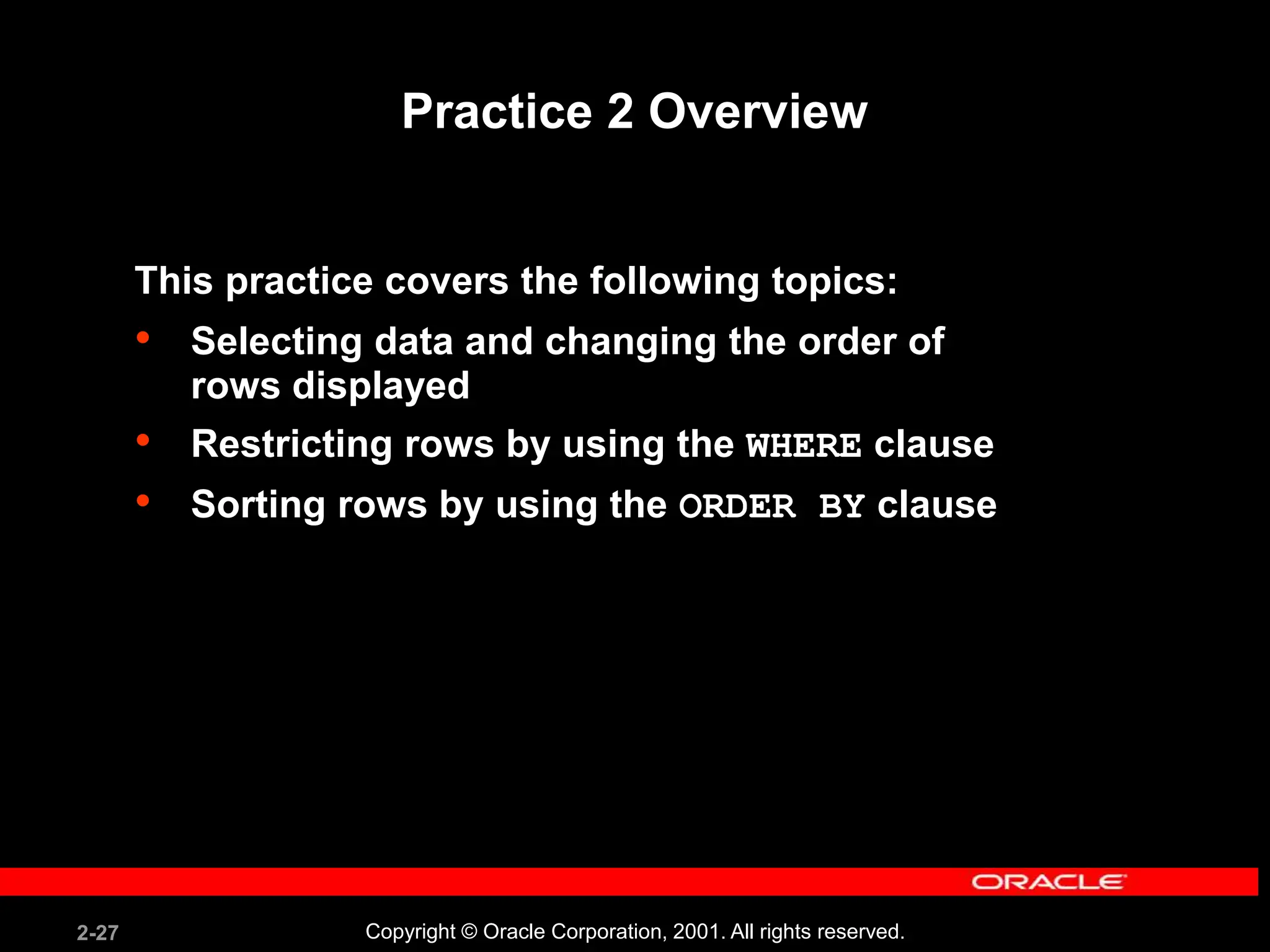This document outlines how to restrict and sort data using SQL queries, focusing on the 'WHERE' clause to limit row outputs based on specific conditions. It details various comparison operators, logical conditions, and the use of the 'ORDER BY' clause for sorting returned data. The key lessons include constructing queries to fulfill specific retrieval and sorting requirements.
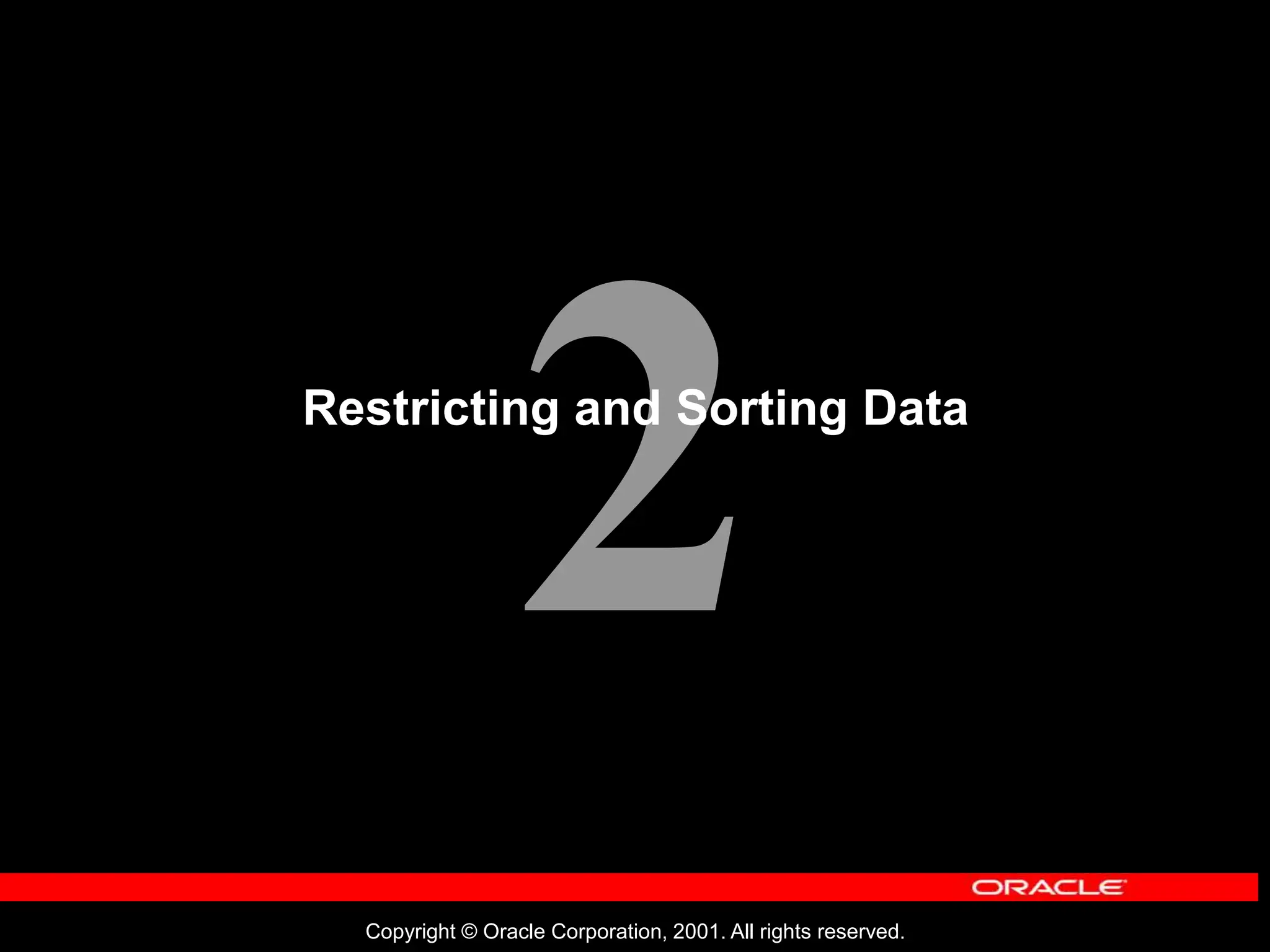
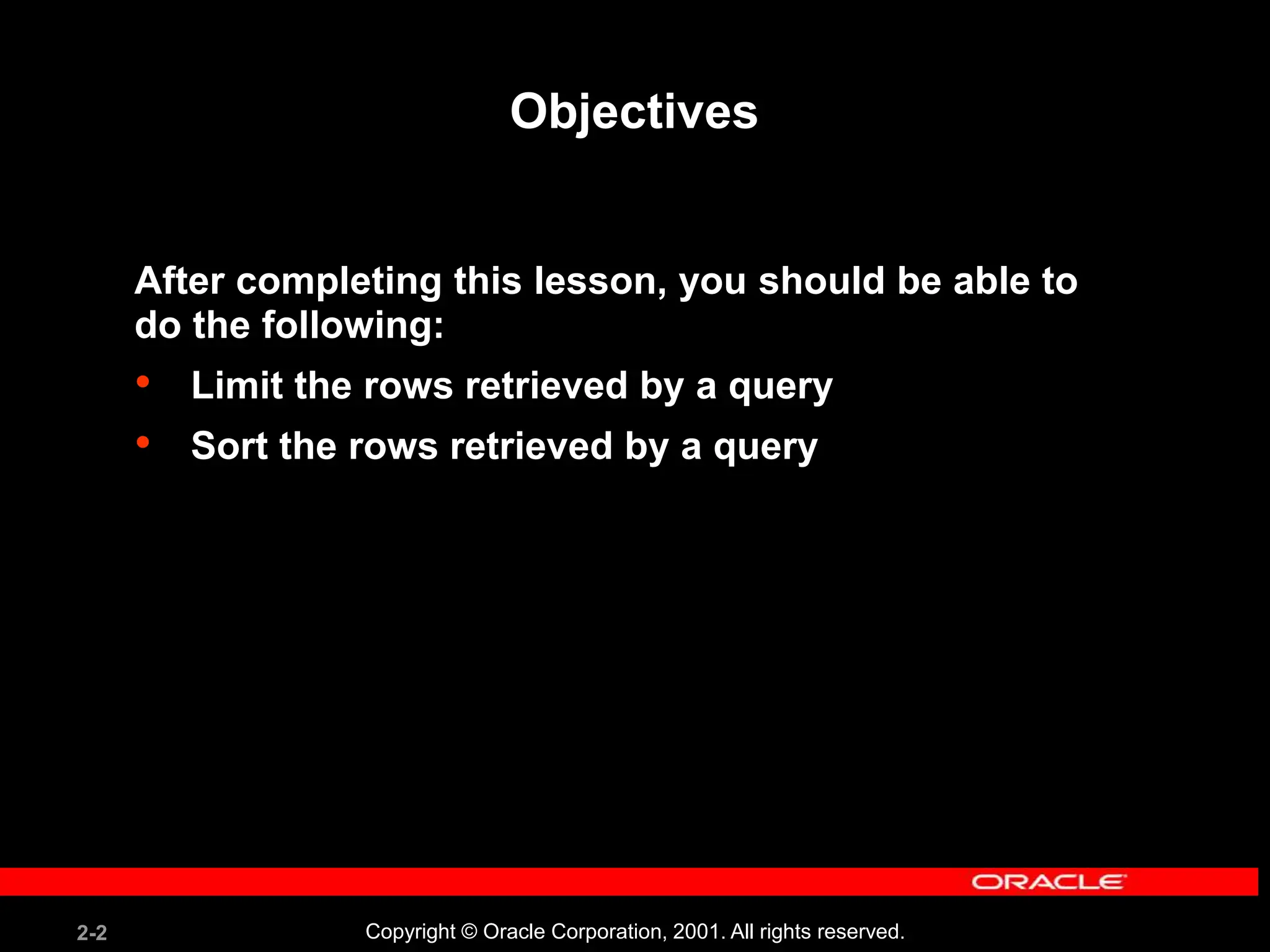
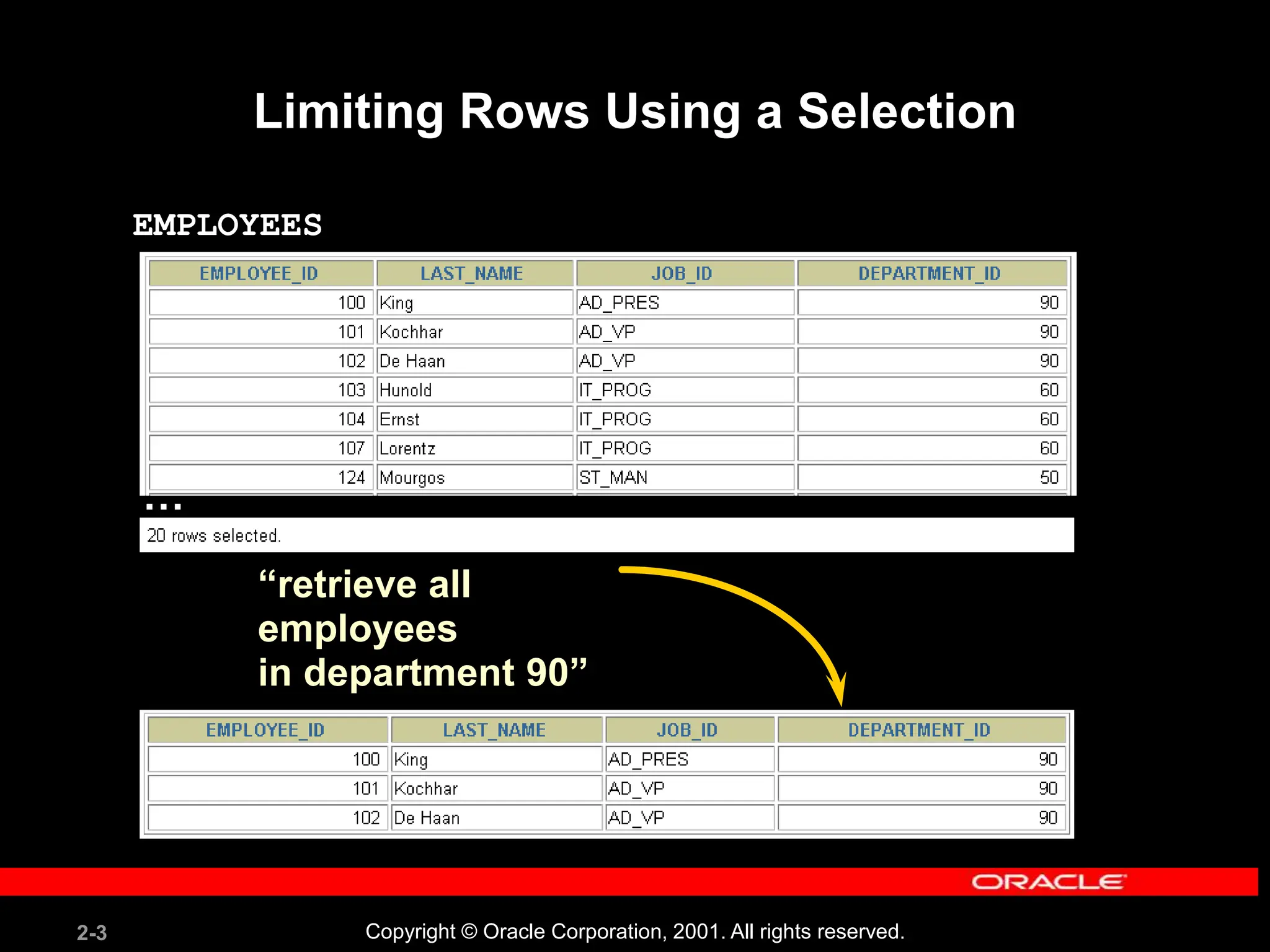
![2-4 Copyright © Oracle Corporation, 2001. All rights reserved.
Limiting the Rows Selected
• Restrict the rows returned by using the WHERE
clause.
• The WHERE clause follows the FROM clause.
SELECT *|{[DISTINCT] column|expression [alias],...}
FROM table
[WHERE condition(s)];](https://image.slidesharecdn.com/les02-240216030345-835243c9/75/Les02-Restricting-and-Sorting-Data-using-SQL-ppt-4-2048.jpg)

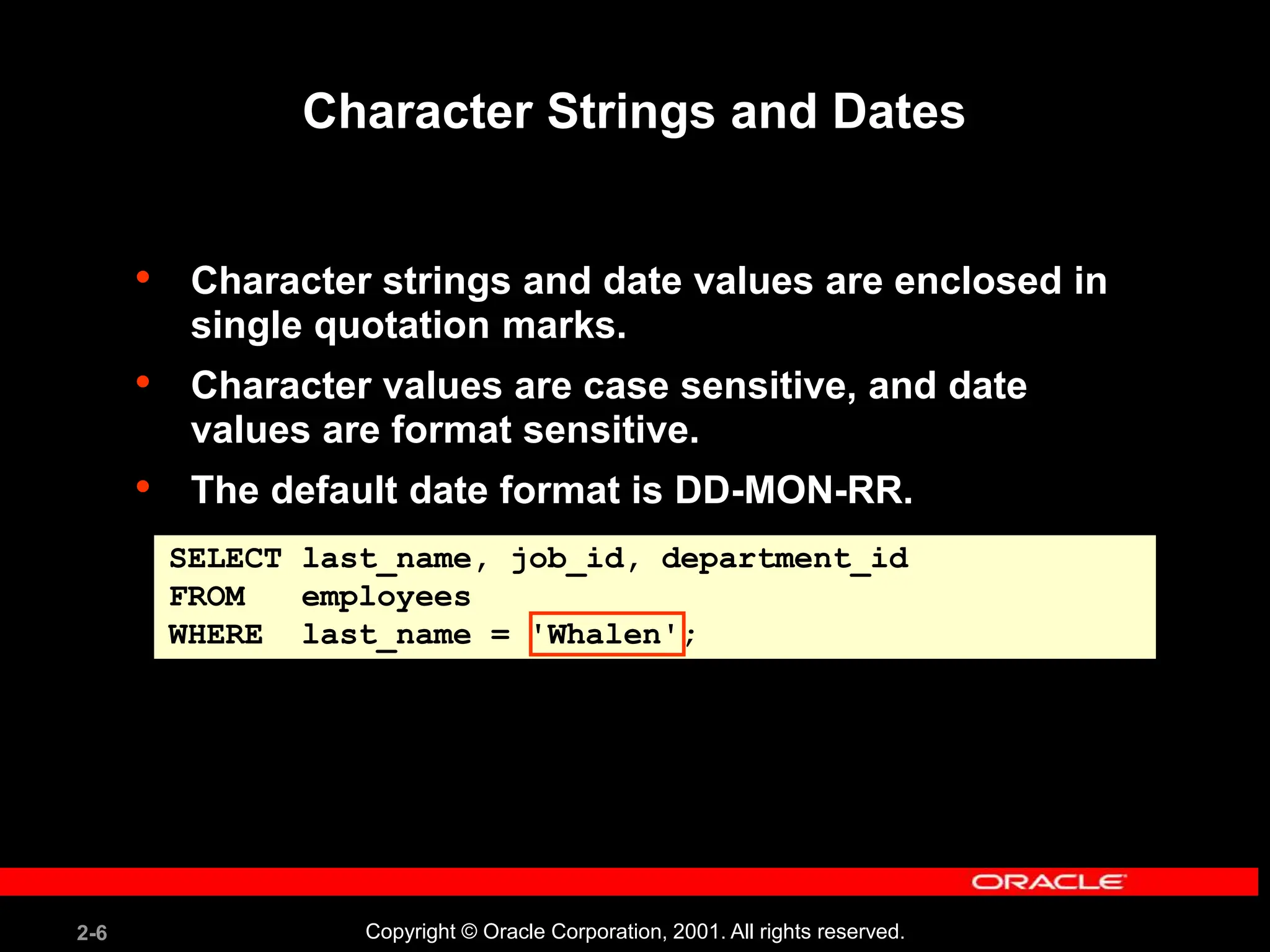
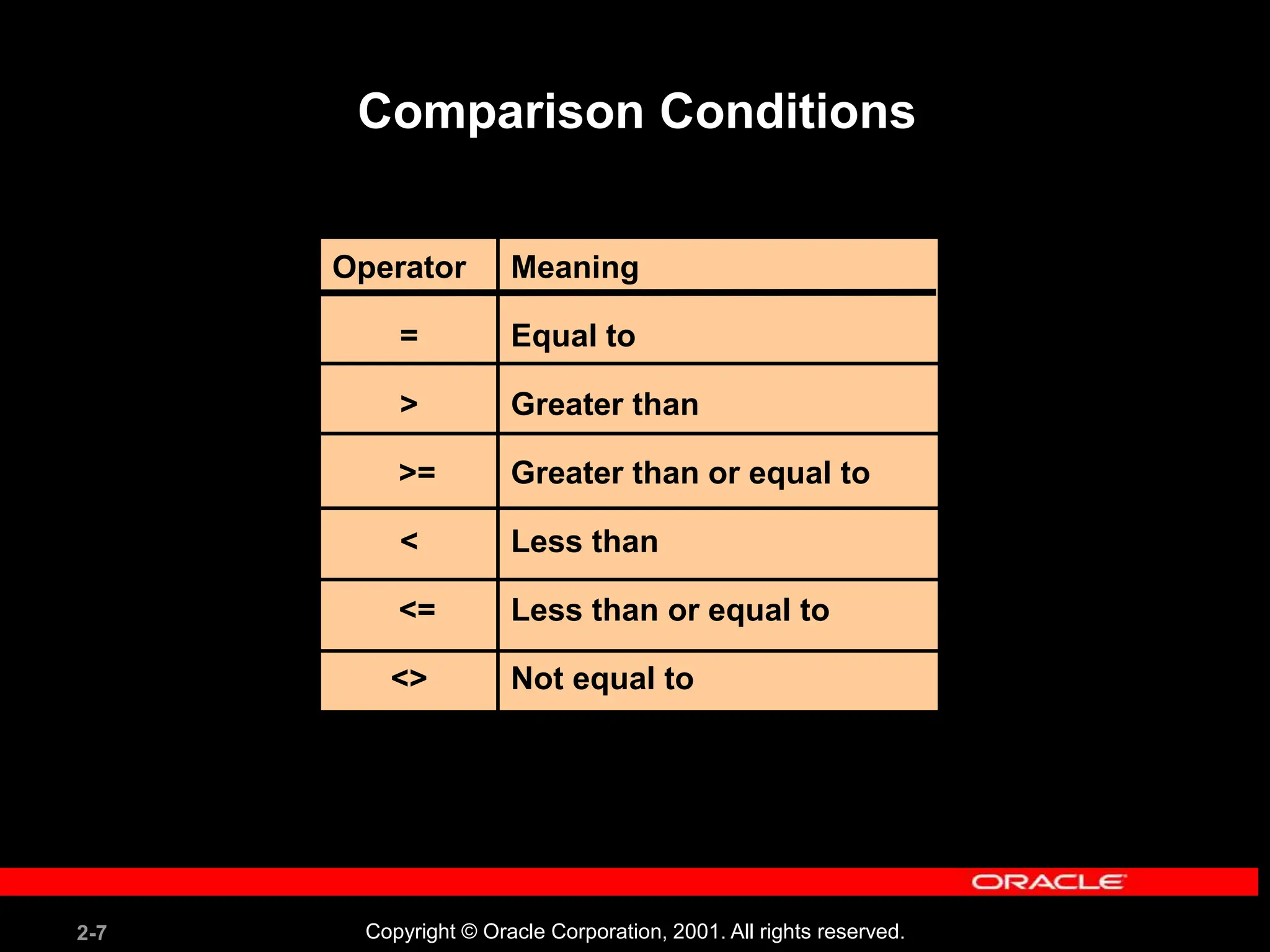
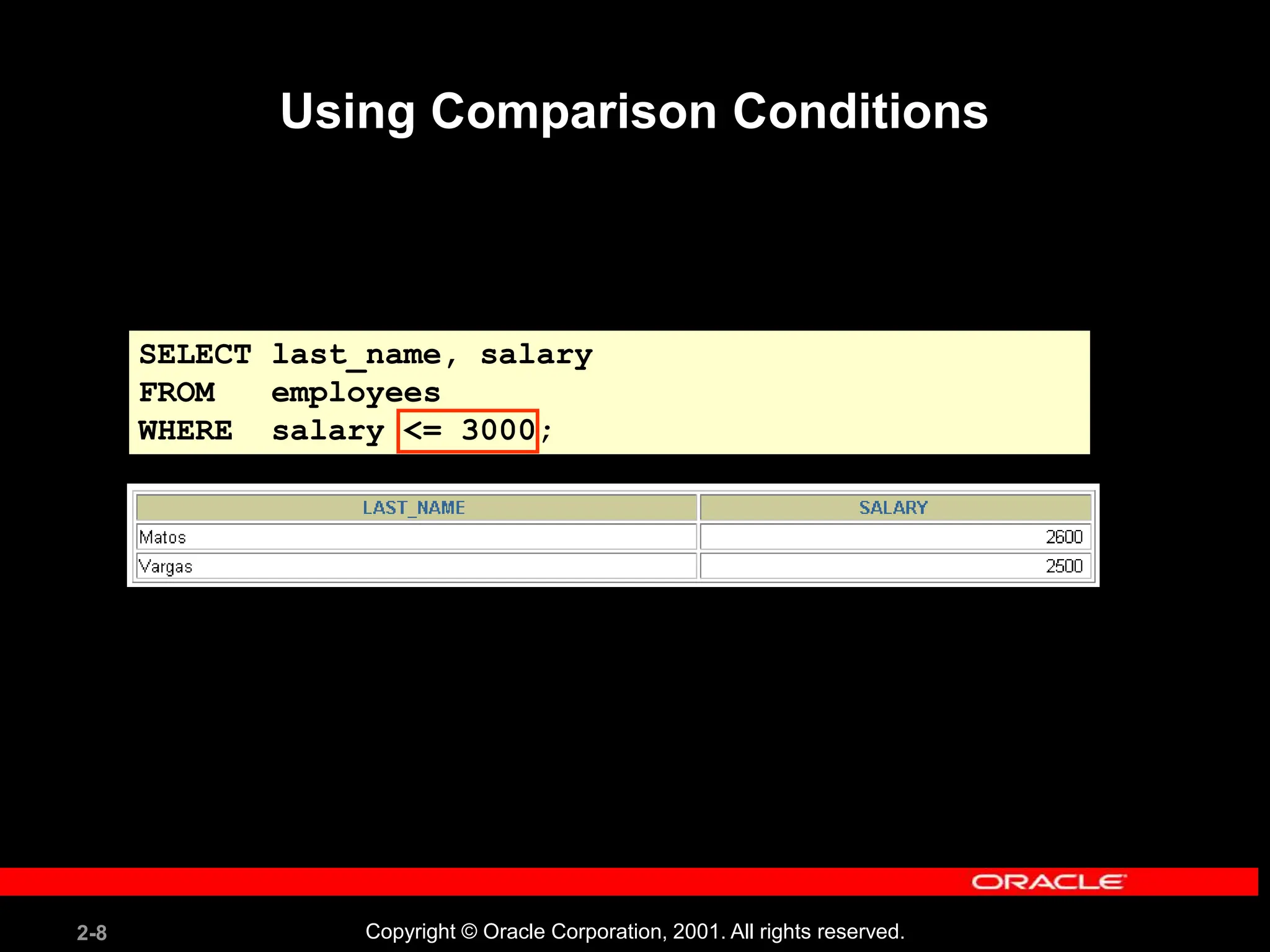
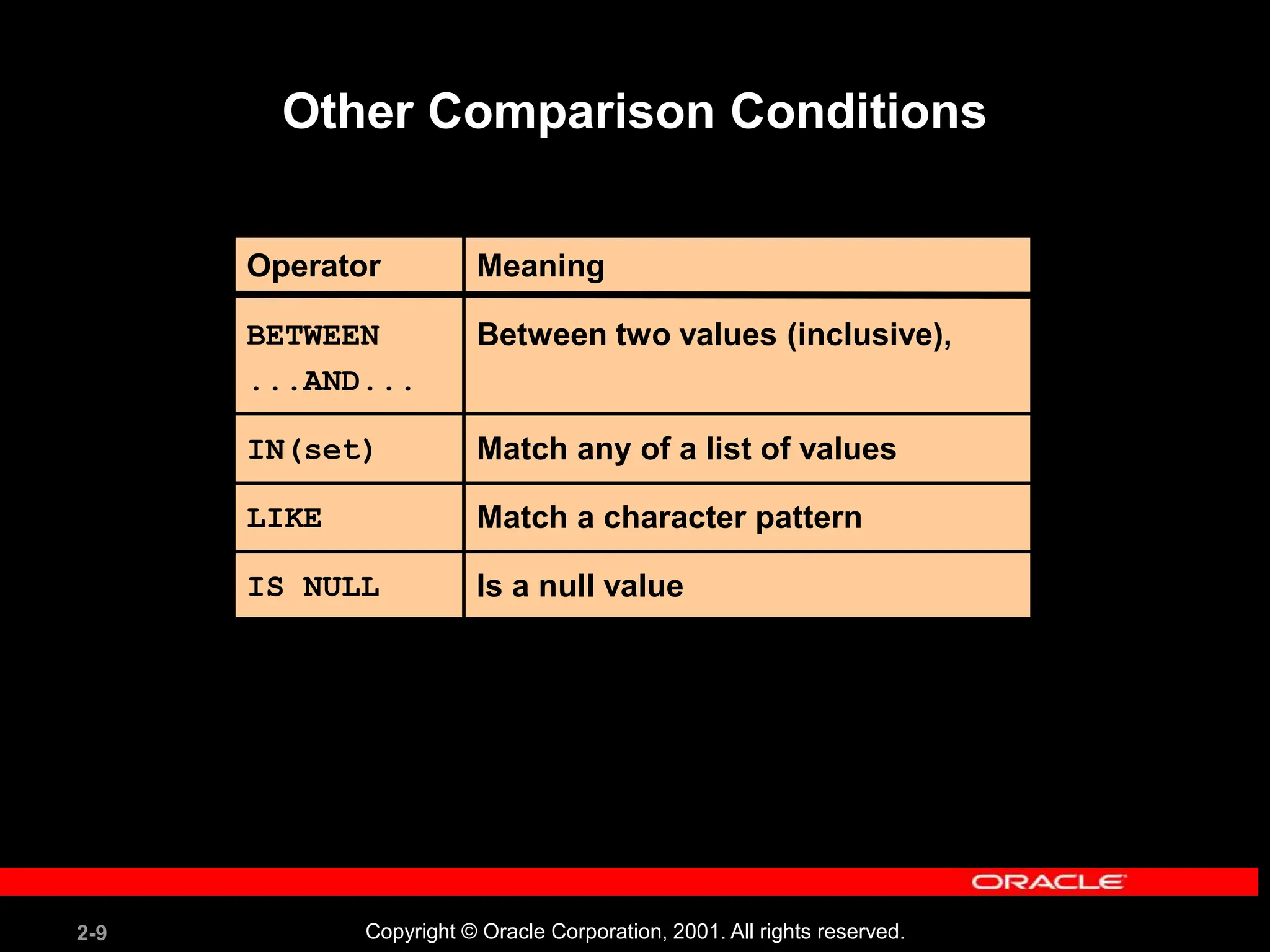
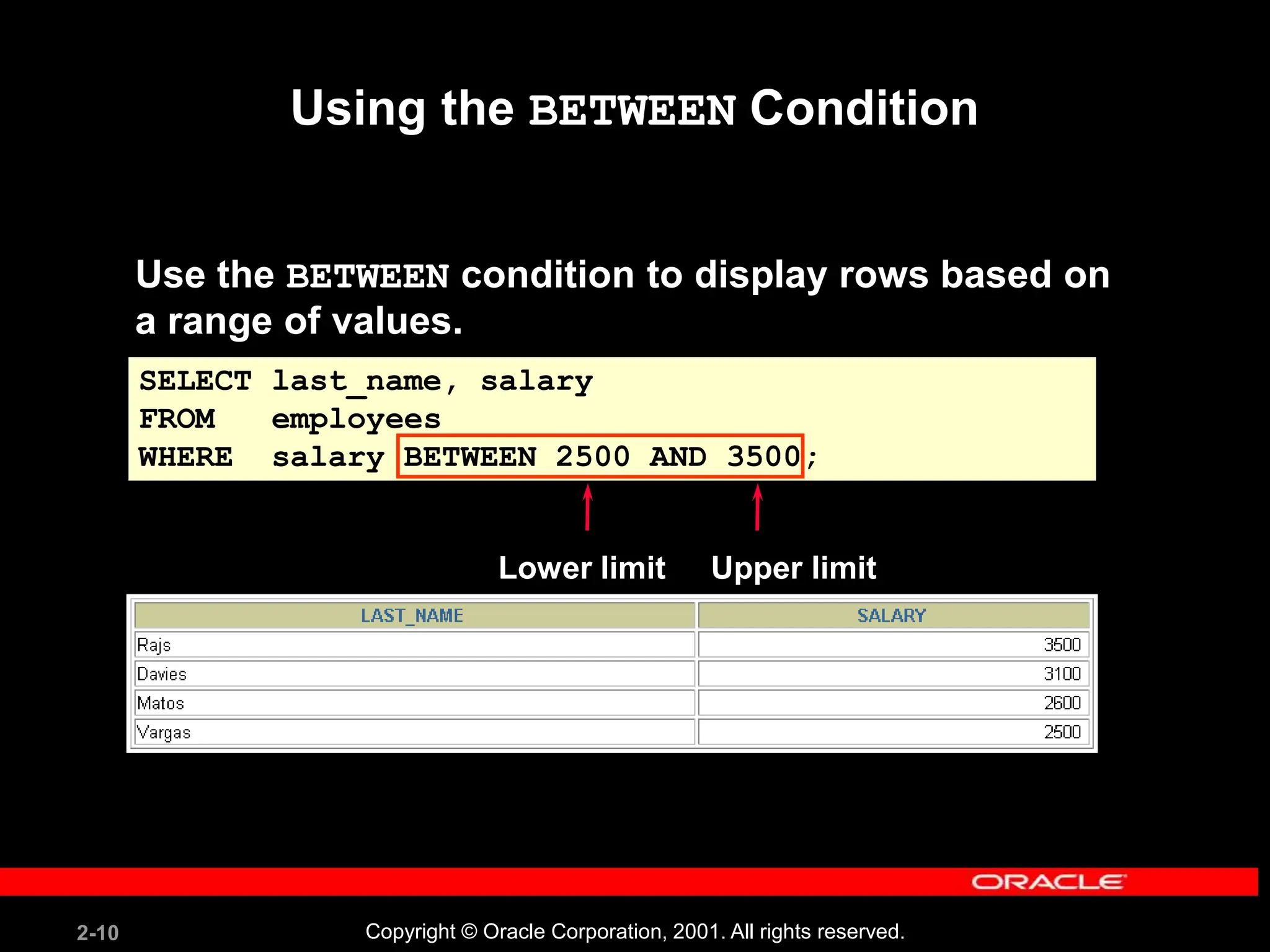
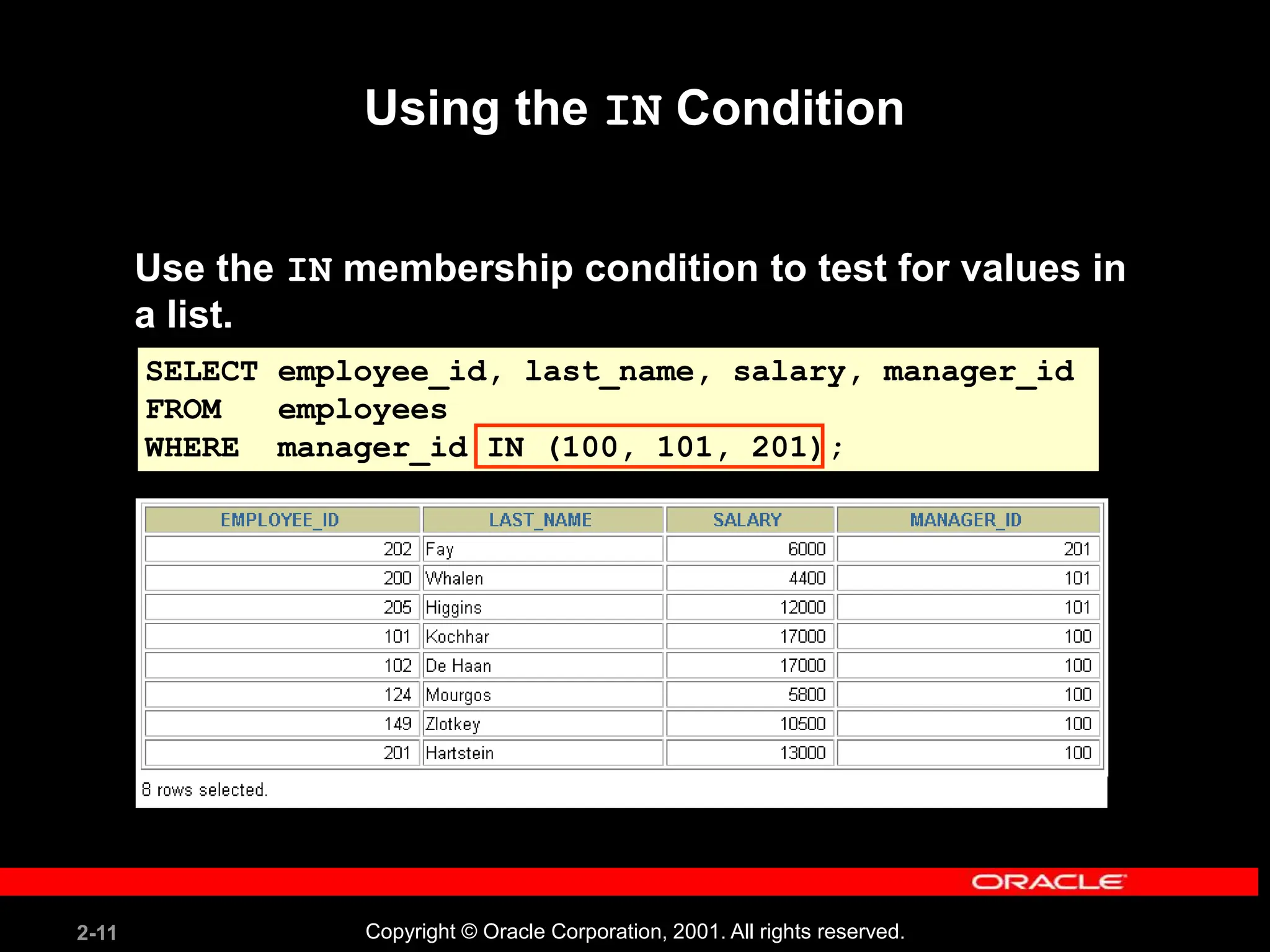
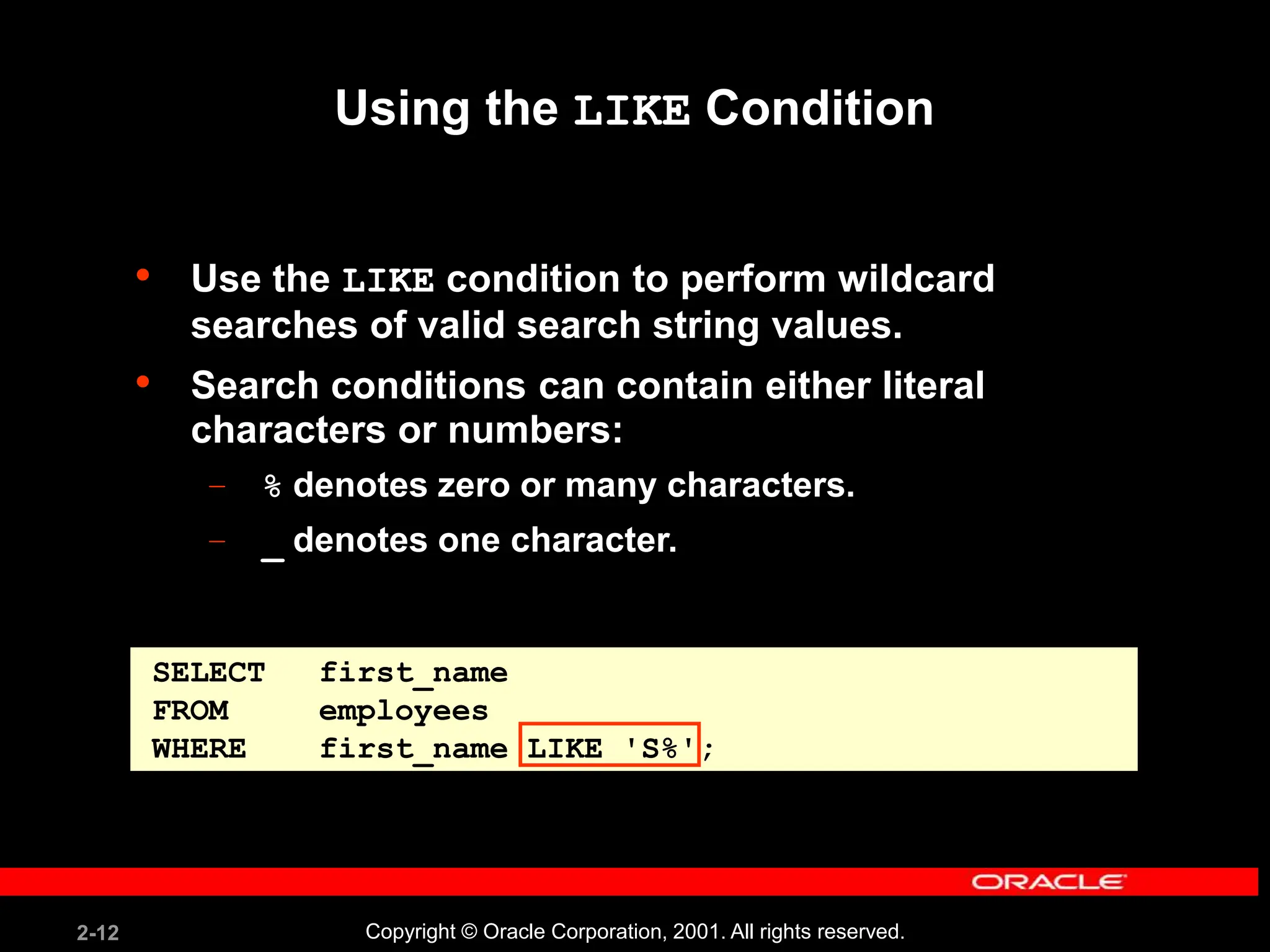
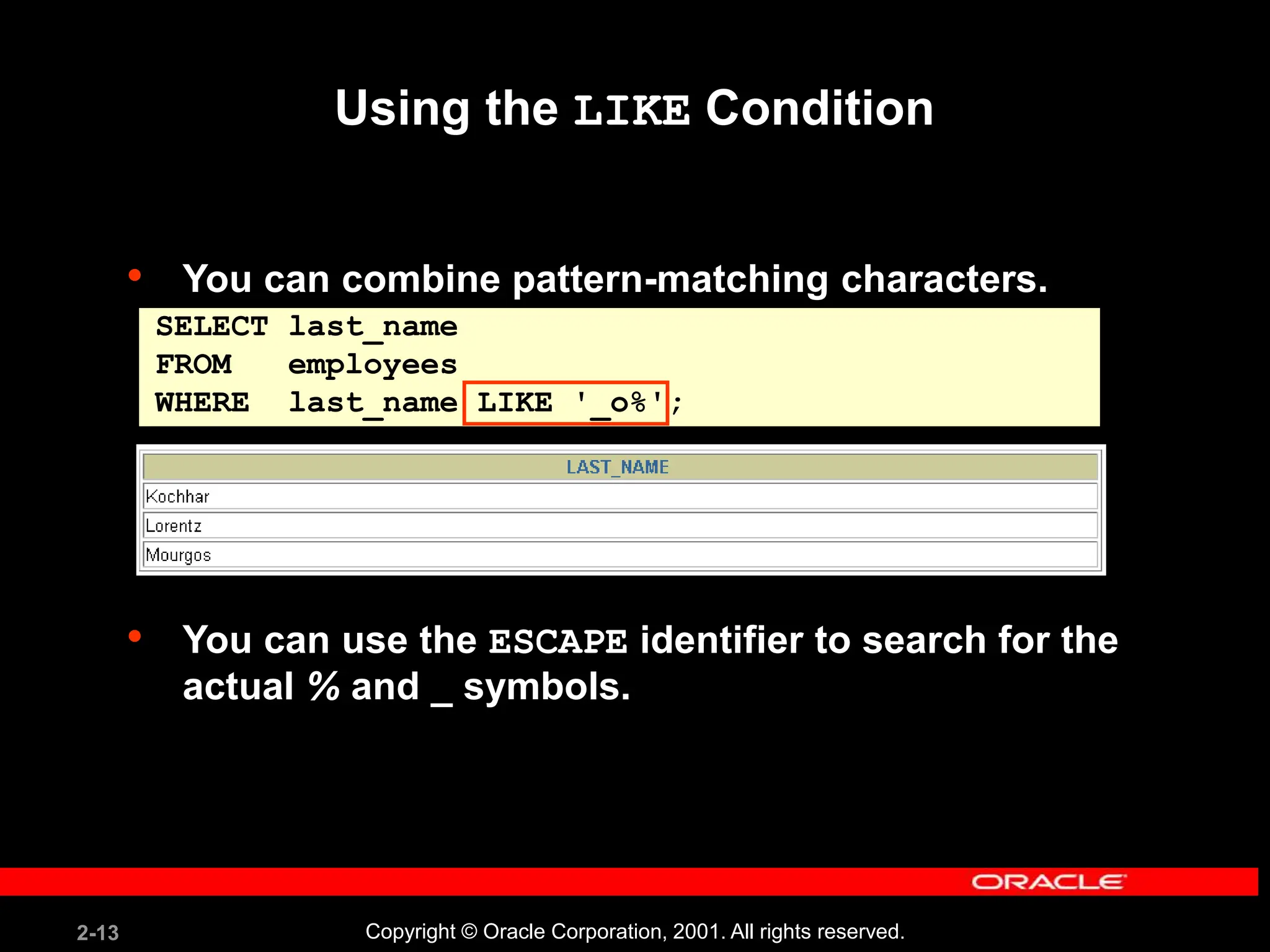
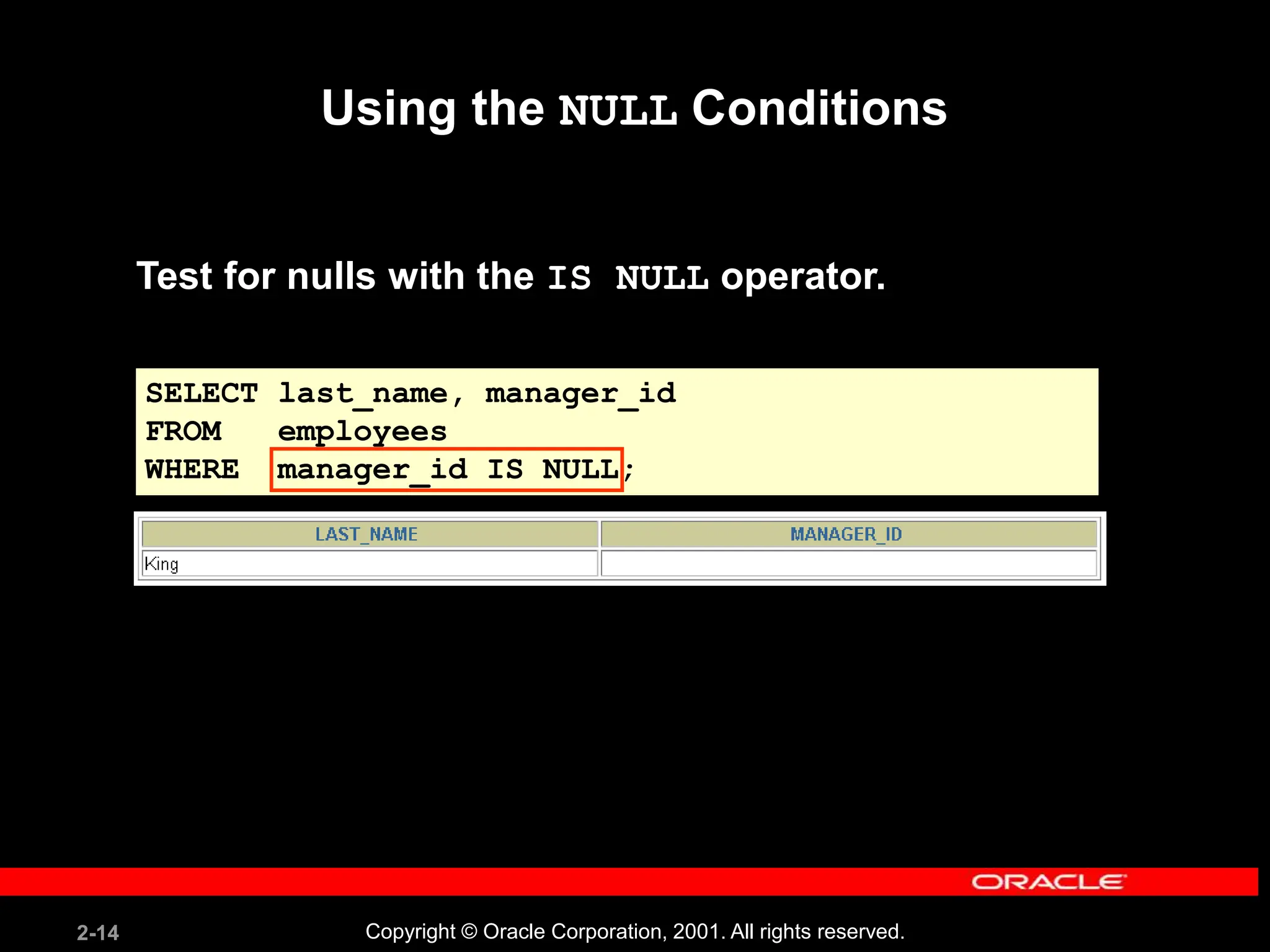
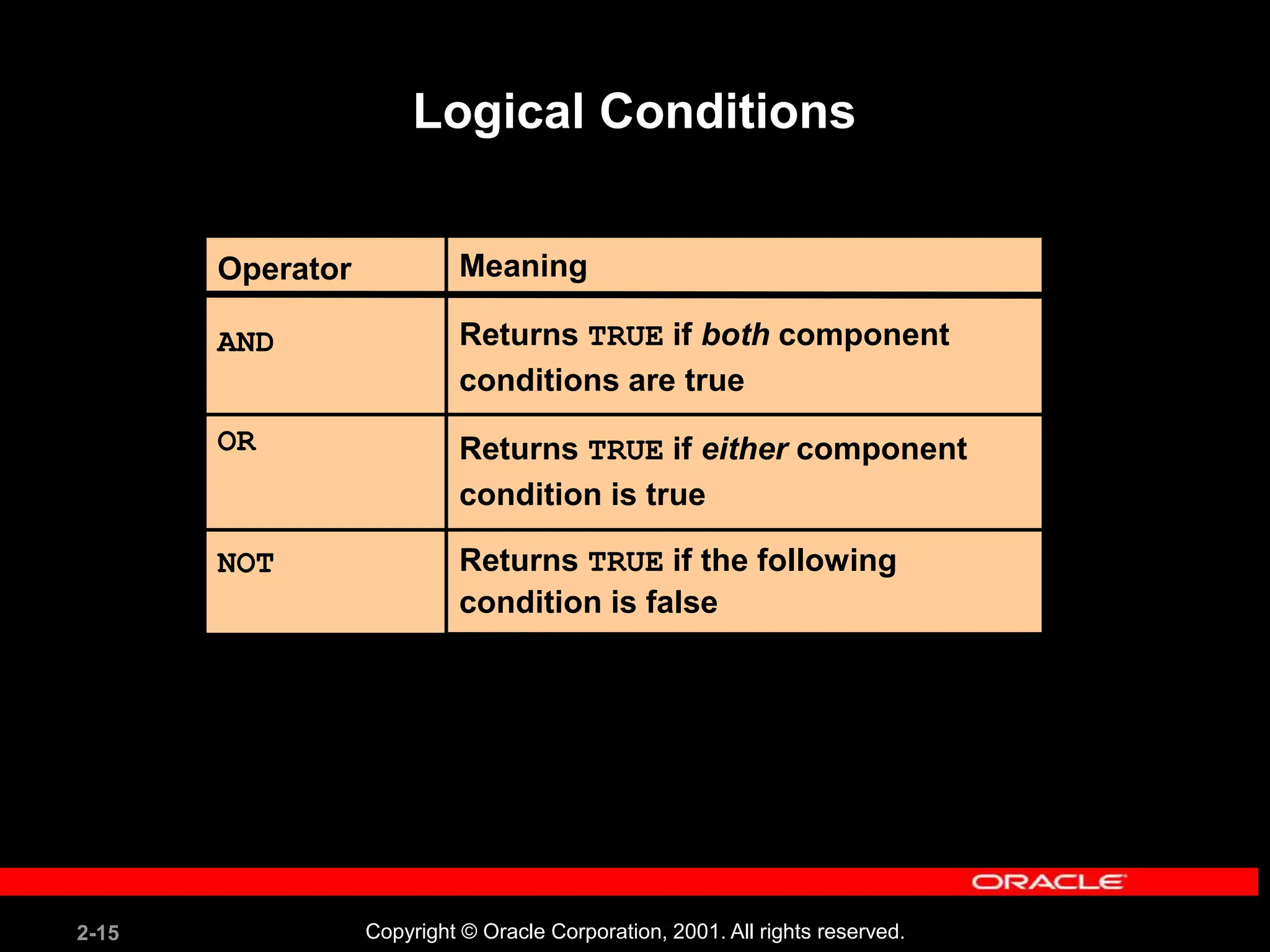
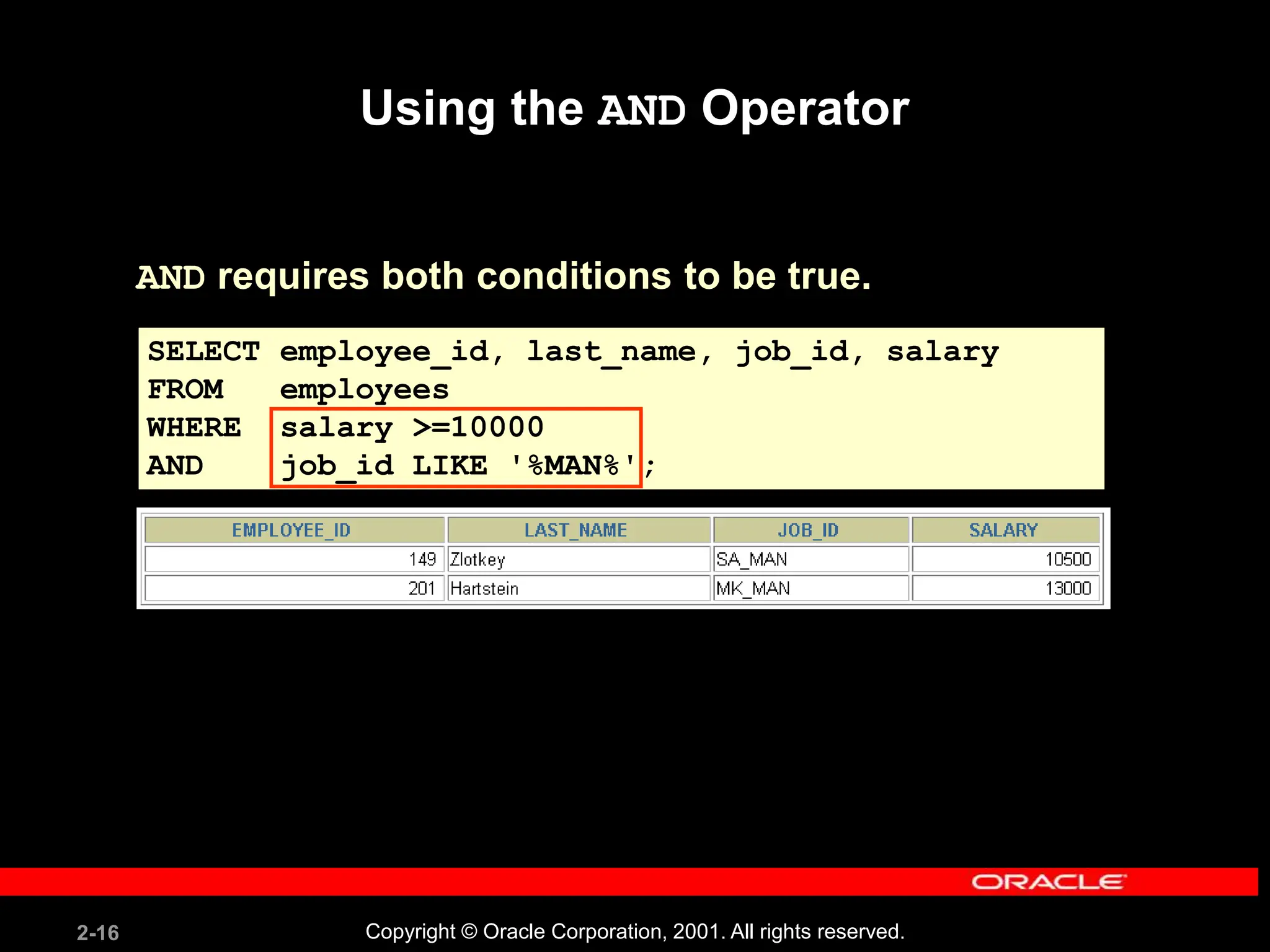
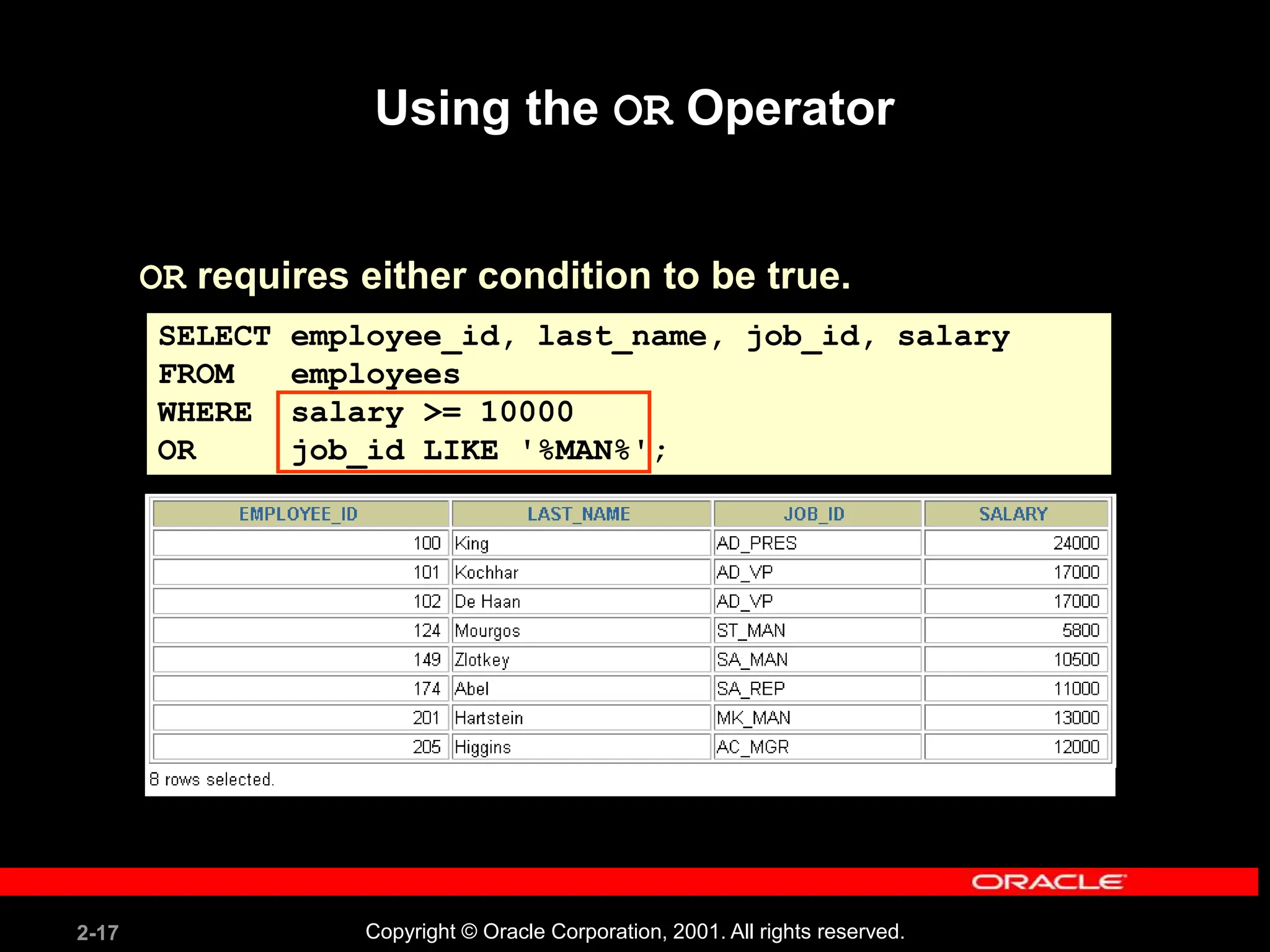
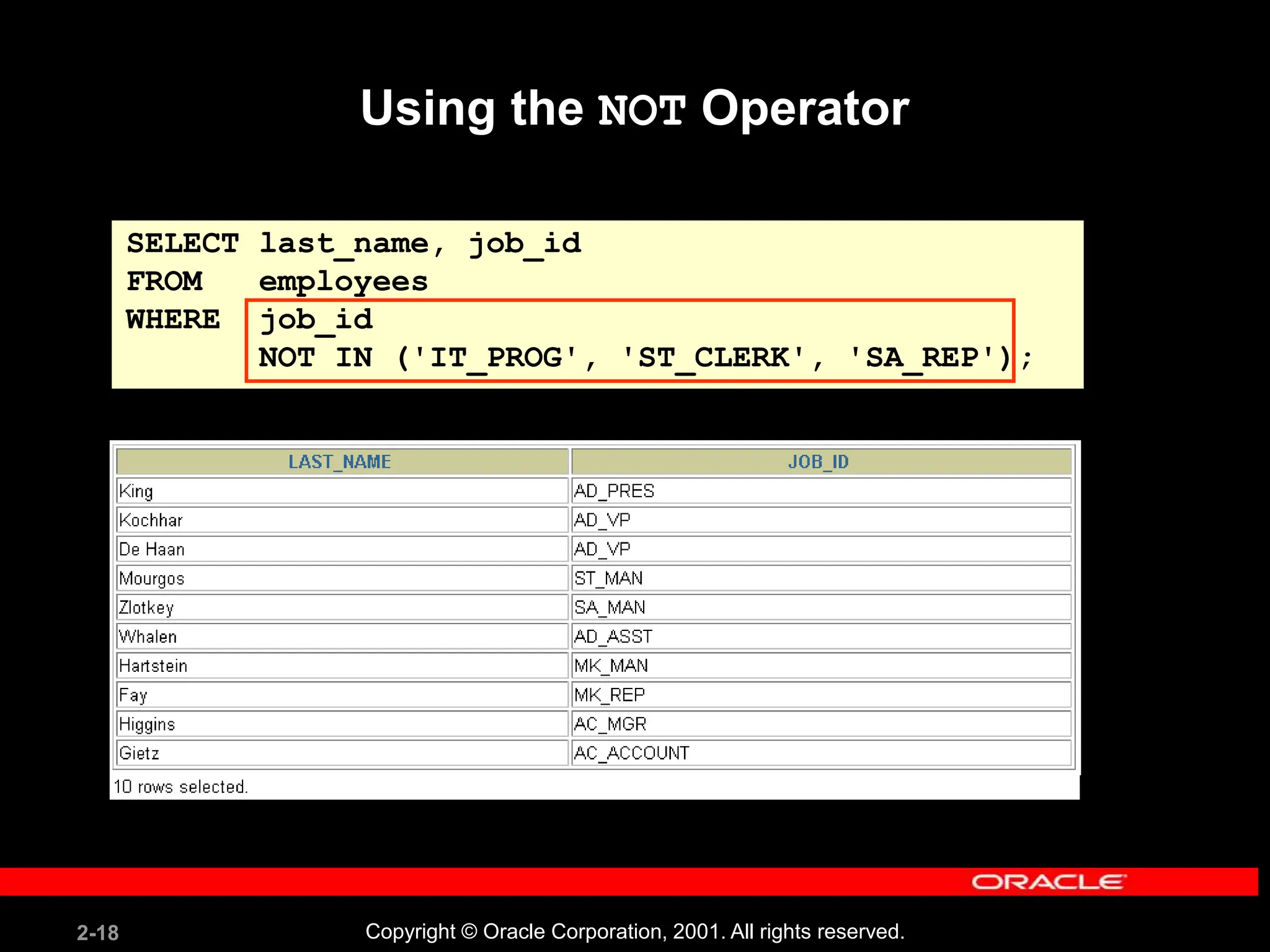
![2-19 Copyright © Oracle Corporation, 2001. All rights reserved.
Rules of Precedence
Override rules of precedence by using parentheses.
Order Evaluated Operator
1 Arithmetic operators
2 Concatenation operator
3 Comparison conditions
4 IS [NOT] NULL, LIKE, [NOT] IN
5 [NOT] BETWEEN
6 NOT logical condition
7 AND logical condition
8 OR logical condition](https://image.slidesharecdn.com/les02-240216030345-835243c9/75/Les02-Restricting-and-Sorting-Data-using-SQL-ppt-19-2048.jpg)
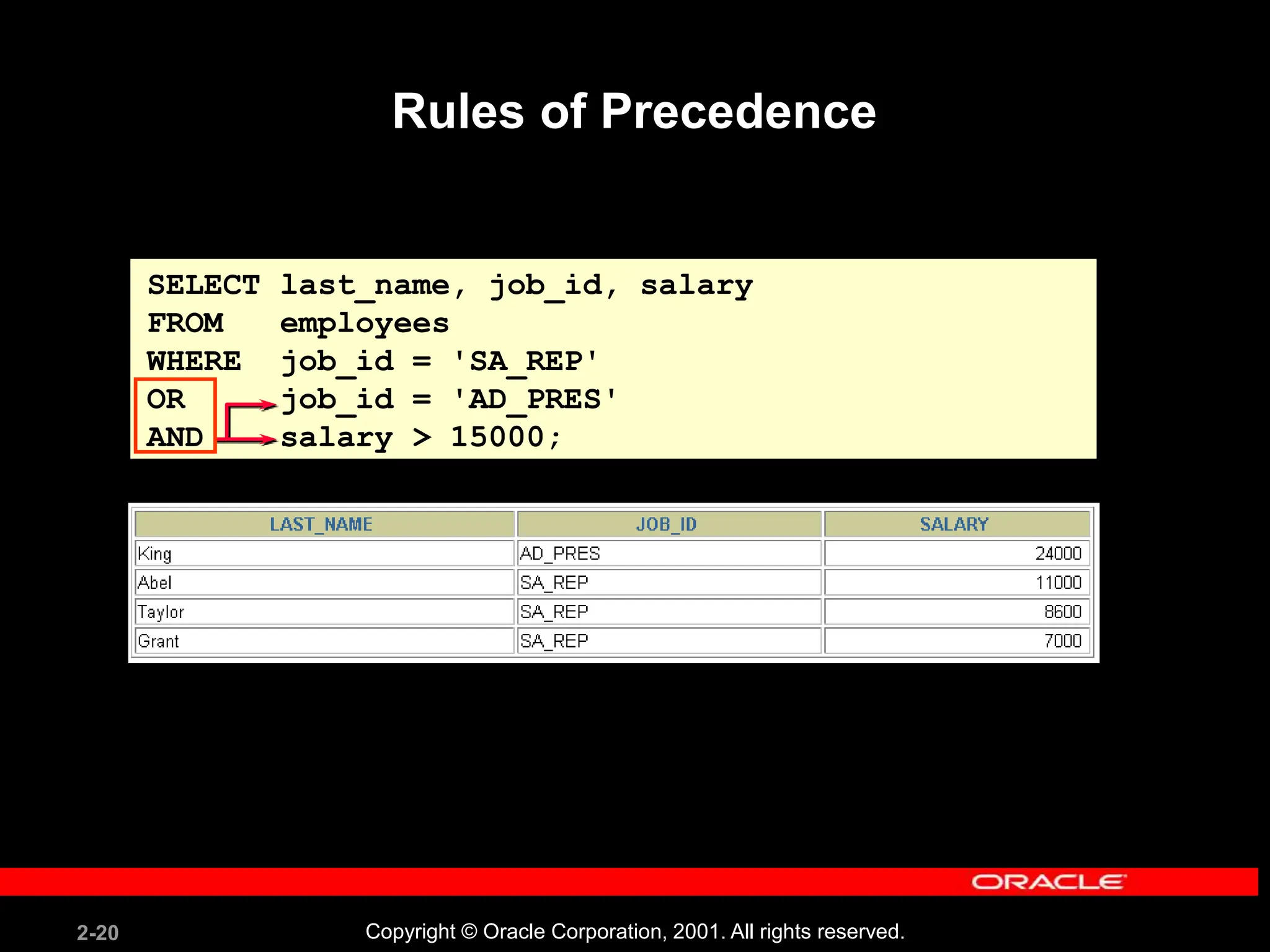
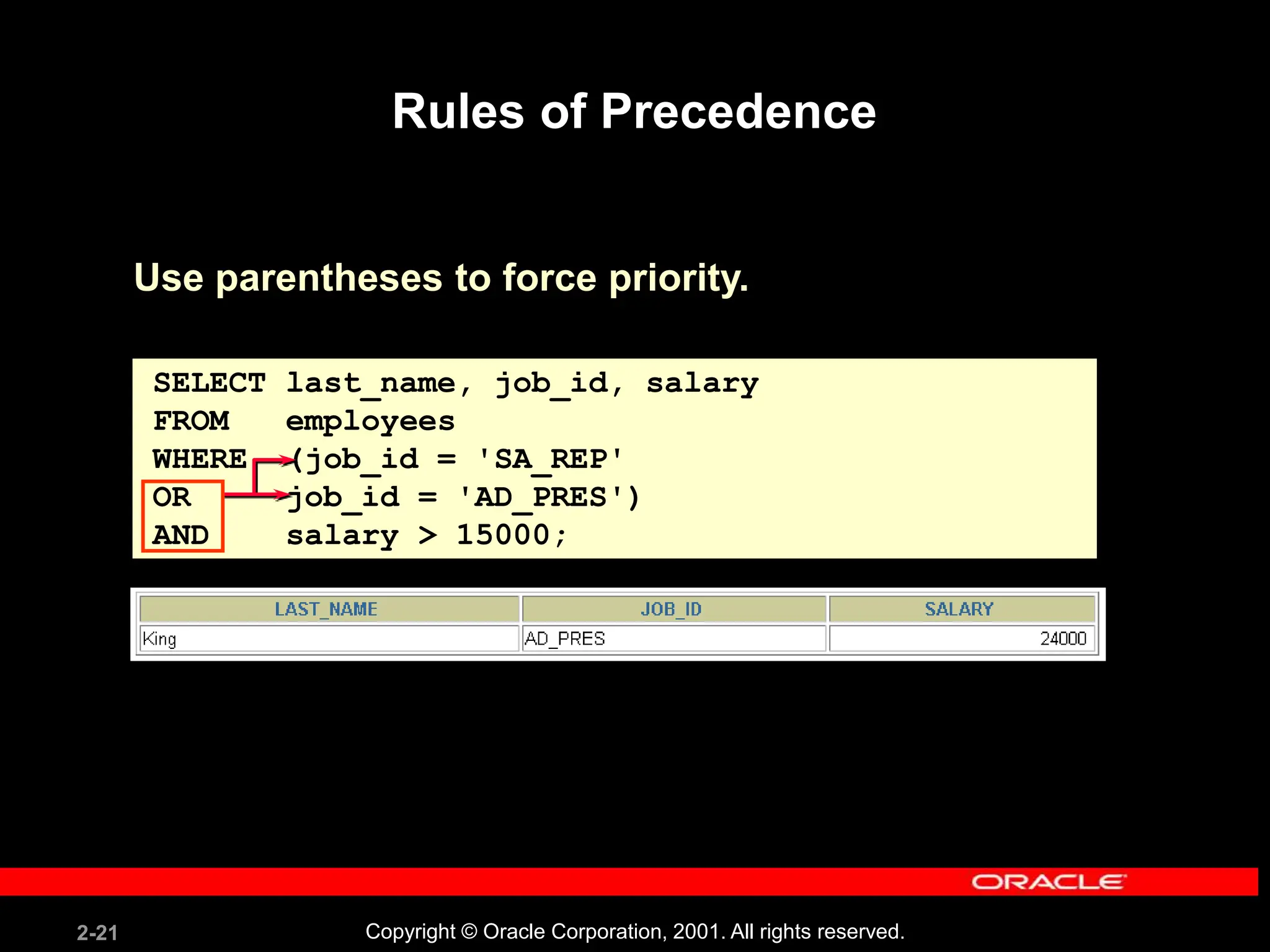
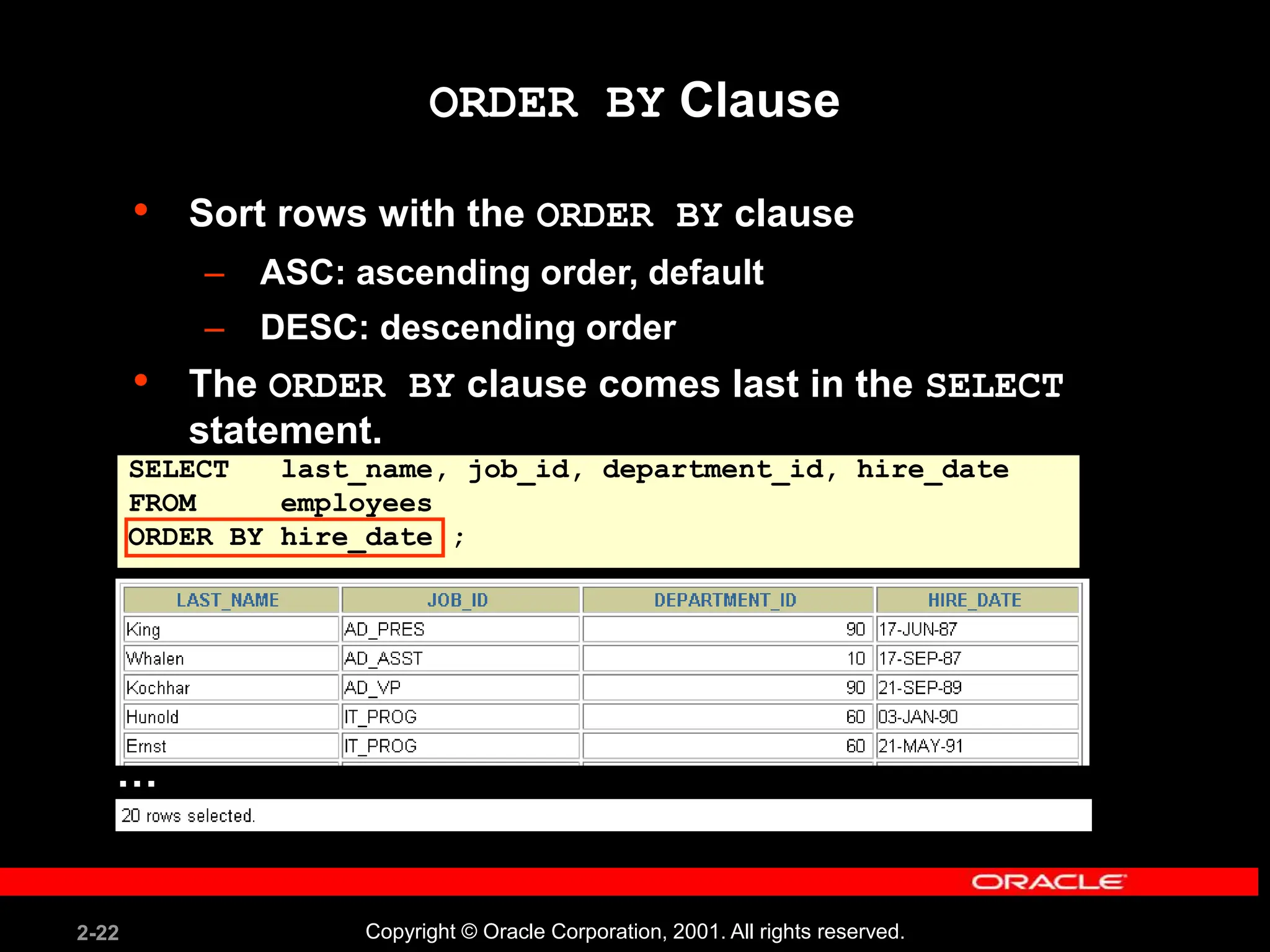
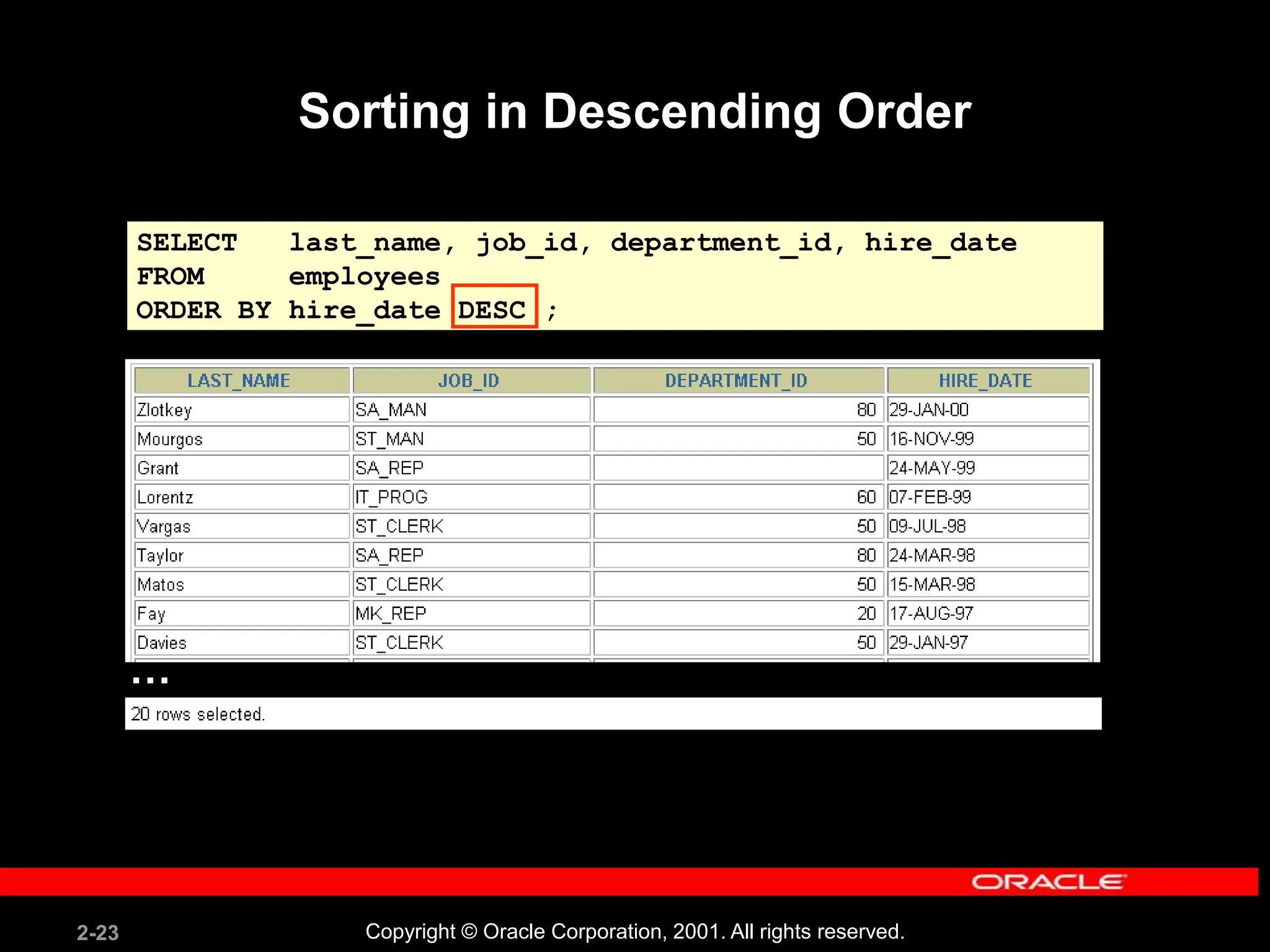
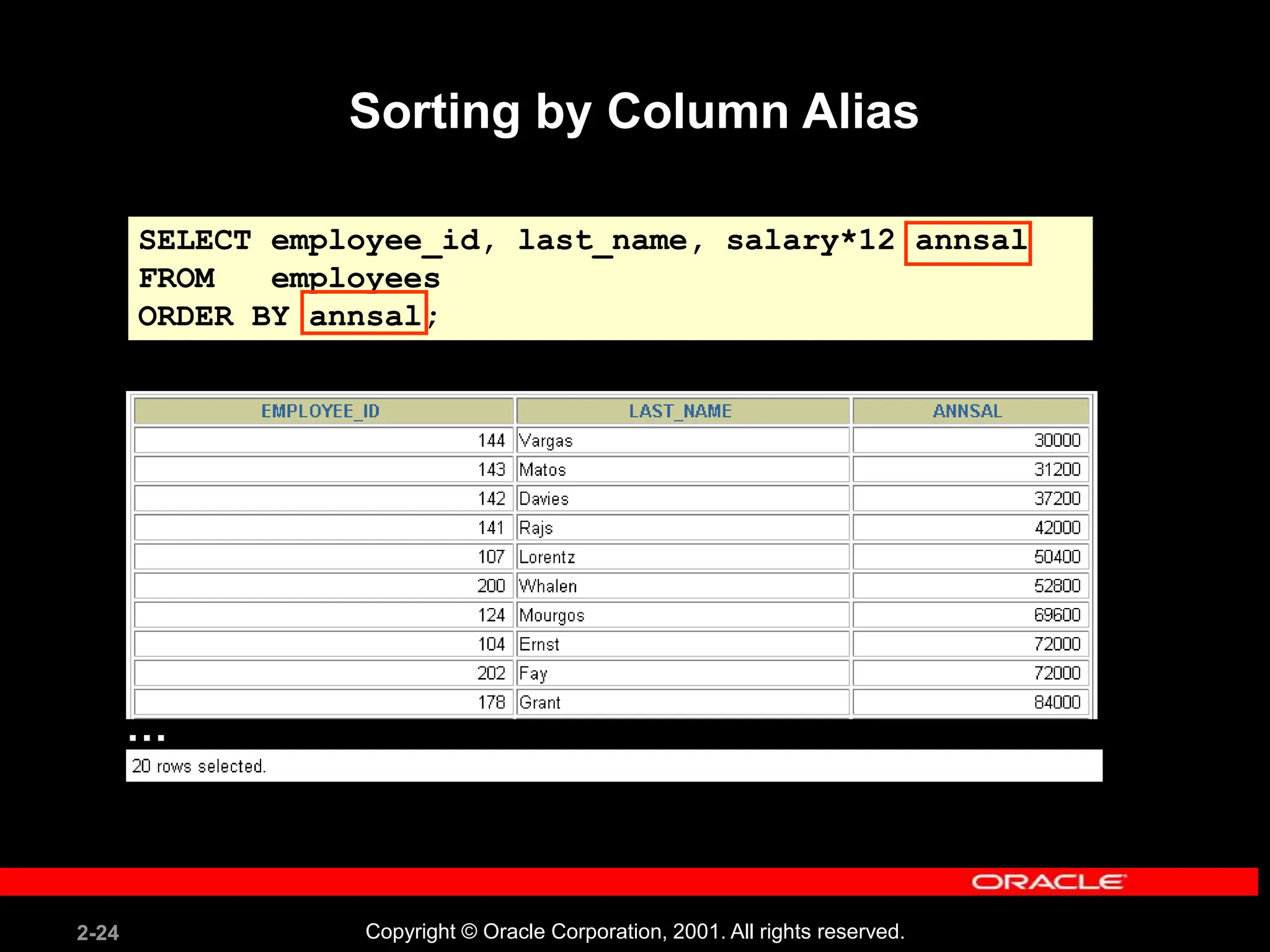
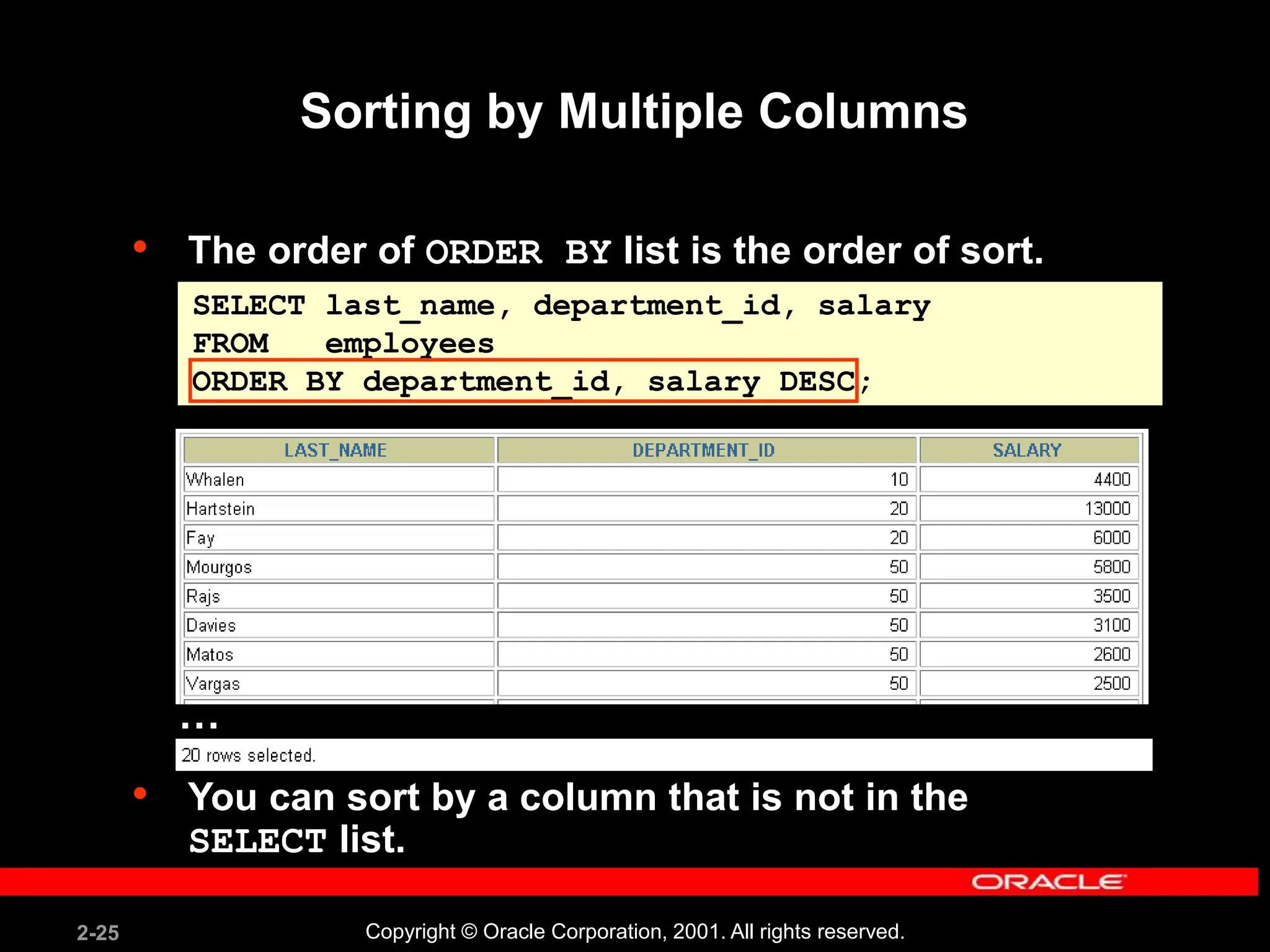
![2-26 Copyright © Oracle Corporation, 2001. All rights reserved.
Summary
SELECT *|{[DISTINCT] column|expression [alias],...}
FROM table
[WHERE condition(s)]
[ORDER BY {column, expr, alias} [ASC|DESC]];
In this lesson, you should have learned how to:
• Use the WHERE clause to restrict rows of output
– Use the comparison conditions
– Use the BETWEEN, IN, LIKE, and NULL conditions
– Apply the logical AND, OR, and NOT operators
• Use the ORDER BY clause to sort rows of output](https://image.slidesharecdn.com/les02-240216030345-835243c9/75/Les02-Restricting-and-Sorting-Data-using-SQL-ppt-26-2048.jpg)
